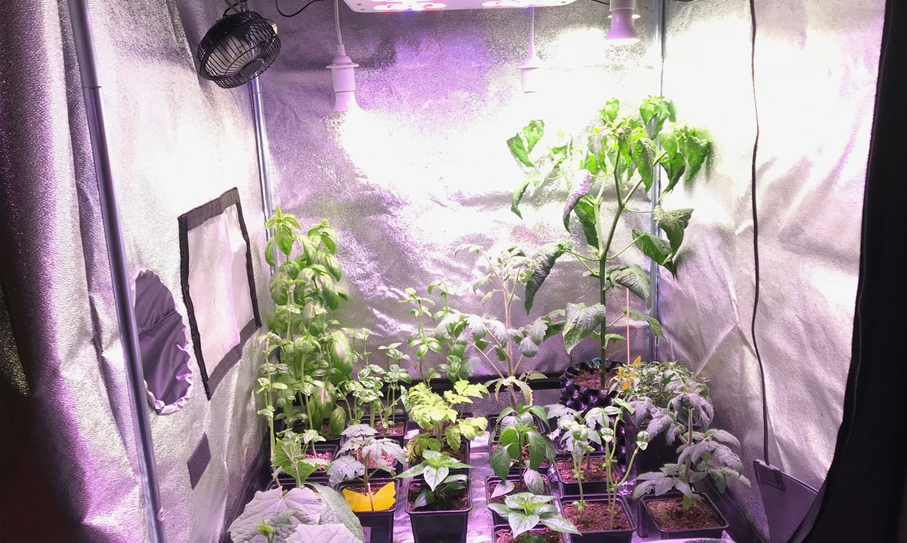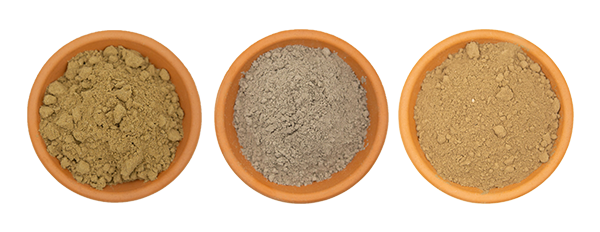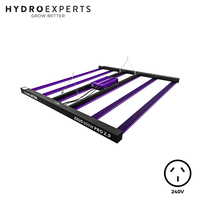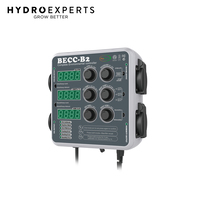Ultimate Guide to Grow Room Ventilation, Temp, Humidity & CO2
By Jessica McKeil | 3 December 2021

Indoor growing requires a comprehensive reconstruction of all the essential elements available outdoors, including temperature, humidity, air circulation, and atmospheric compounds. To achieve this, cultivators control ventilation, CO2, vapour pressure deficit, and so much more.
In our experience, a well-managed indoor environment with simple technology can deliver better results than a grow room kitted out with the latest tech but poorly controlled. More techs doesn't mean better yields. All you need is an understanding of the fundamental elements, managed with the help of a simple grow room controller.
The following guide covers all the critical environmental factors within the grow room. It covers the ideal levels for peak production, as well as how to manage their inevitable fluctuations.
Sealed vs. Unsealed Grow Rooms
One of the first considerations for indoor grow rooms is determining whether to create a sealed or unsealed grow room. Most growers begin with an unsealed room, and as their experience and operation grow, they graduate into a sealed environment.
Sealed grow rooms are enclosed environments with no inputs from the outside atmosphere. They allow for total control over both inputs and outputs. Besides emergency exhaust fans, these closed rooms are totally sealed off from the outside environment.
Sealed grow rooms are more costly and technical to set up, but the yields from a well designed sealed room are substantially better than those from an unsealed environment. Because of the upfront costs, it often makes more sense to set up a larger sealed grow room than a small one (at least from a financial perspective). On the flip side, it may be simpler to control the elements within a smaller room.
A closed grow room allows the cultivator to control temperatures and humidity levels. It also allows for the introduction of C02, which is not economical nor practical for an unsealed environment. With no air intake or ongoing exhaust, there is also a substantially lower risk for mold, pest infestation, and odors. When discretion is a concern, sealed rooms are the only option.
Because sealed rooms are only minimally impacted by the outside atmosphere, they typically require air conditioners (or other cooling methods) to moderate temperature. Sealed rooms often have water recycling built into the design, and let's not forget about the need for dehumidifiers and sometimes humidifiers. All this additional equipment adds to the setup costs and ongoing power consumption.
Sealed Grow Room Pros
- Allows for total control over the grow room environment
- Allows for the introduction of CO2
- Odors are controlled
- Better yields, when well managed
Sealed Grow Room Cons
- Costly to set up, although increased yields
- May require more tech to control elements
- Higher energy consumption
Unsealed grow rooms, sometimes called traditional grow rooms, are vented, either to another room or outside. The outside environment will impact the grow tent atmosphere significantly more than in a sealed facility. Heaters, air conditions, and (de)humidifiers may also be required to maintain ideal conditions. The grow room is more susceptible to elemental spikes and fluctuations because air from the outside easily flows in and out.
Without filters, the grow room is also prone to infestation by mold, pests, and other pathogens. Odor is also likely, as the exhaust vents into the house or through an open window.
If well managed and monitored 24/7 unsealed rooms can still produce an impressive crop. However, they pose a different set of challenges than their sealed counterparts.
Unsealed Grow Room Pros
- Cheaper to set up
- Require less equipment
- Smaller space requirements
Unsealed Grow Room Cons
- Cannot boost yields with CO2
- Cannot eliminate the risk of pest or mold infestation
- Cannot control odors
Setting Up Open Loop and Closed Loop Grow Rooms
The goal for any grow room, no matter the design, is to maintain ideal temperature, relative humidity, and atmospheric levels, all while meeting a strict air exchange rate. Suggestions vary, but we recommend exchanging all of the air in your room more than once every three minutes.
Open and closed-loop rooms lie on more of a spectrum than two black and white categories. If you haven't noticed already, cultivators often have strongly held opinions about the best designs for indoor grow rooms.
The following covers the basic ventilation design from air intake to exhaust for both systems.
Open loop grow rooms (unsealed rooms) have a point of entry for new air. At the simplest, this is an open window. More advanced designs incorporate a purpose built air intake vent. It may draw from another room or directly from the outdoors. Unfiltered, this poses a significant risk of introducing dangerous molds and pests into the grow room.
What is required in terms of fresh air for the closed (or sealed) grow room? Instead of an air intake, new 'air' comes in the form of CO2 enrichment.
Both sealed and unsealed rooms have an exhaust system. In a closed environment, the exhaust only activates should the temperature, humidity or CO2 reach go above preset levels. In this scenario, there are automatic systems in place, or alarms from a grow room monitor.
Open-loop systems also require an exhaust fan (and sometimes also an intake fan) for proper air circulation. You'll want to add an intake filter. Intake filters are critical should your grow room draw air directly from the outdoors.
Do you need filters on the other end? Exhaust filters (i.e. carbon filters) remove most of the tell-tale odor from the outflow of air. Essential for all indoor grows where discretion is paramount.
Within a closed system., air circulation comes from strategically placed fans, the pull of the exhaust, and the CO2 enrichment. An exhaust fan paired with passive air intake is more than enough to supply the room with enough fresh air to keep plants thriving in an open system. Of course, regular fans are also valuable for eliminating stagnant pockets and plant health.
CO2 Enrichment in a Grow Room Environment
As mentioned above in the discussion about closed (or sealed) grow rooms, these environments need additional CO2 to supply enough fresh 'air' to thrive.
But, uncontrolled CO2 enrichment can become costly. Adding CO2 is a carefully managed endeavour to ensure it's added when plants will reap the most benefits and so it will not get depleted through the exhaust system.
There are two methods of CO2 enrichment: CO2 burners and compressed liquid gas. Burners are beneficial in some scenarios because they help warm up cold spaces. Yet, many small to medium-sized grow rooms rely on compressed liquid CO2 because it's easy to find, portable, and affordable.
As an example, here is the calculation for a 400 sq. ft (20 ft x 20 ft) grow room:
0.003 cu. ft/hr per sq.foot x 400 sq. ft grow room = 1.2 cu. ft./hr
It is helpful to use a grow room monitor or an automated CO2 controller to manage CO2 enrichment. Not only does this provide you with a constant reading on grow room CO2 levels, but the controller will also activate or inactivate CO2 systems based on the need of the room.
Automatic shut offs also reduce waste by shutting off CO2 at night (when plants do not require it) or when the ventilation system is operating. It's a simple and relatively affordable attachment that sits on top of your CO2 tank.
Use the following guidelines for experimenting with CO2 within your grow room:
| Stage | CO2 |
|---|---|
| Clones and Seedlings | Up to 1,300 ppm |
| Vegetative | 900 to 1,500 ppm |
| Early Flower | 900 to 1,500 ppm |
| Late Flower | 900 to 1,100 ppm |
Air Circulation in the Grow Room
Although far less exciting than grow room ventilation systems, air circulating fans are just as necessary within the indoor grow room. Air circulation doesn't require any fancy equipment. Even a typical household fan works to move air from stagnant corners and through the canopy.
Air circulation plays several important roles within the room:
- It is necessary to move air around and flush out stagnant pockets around leaves with fresh pockets full of Co2
- Strategically placed fans to blow under and through the canopy strengthen the plant's branches and stems.
- Reduces the risk of mold, milder, and bug infestation because these pests and diseases do not like constant airflow.
Strategically placed fans are one aspect of air circulation in the grow room. The second is thanks to the ventilation design. Intake and exhaust ducting should be placed at opposite sides of the room, preferably with the intake placed near the floor and the exhaust placed near the top. This design naturally pulls air across and upwards through the room. Combined with a few fans placed near canopy height, you should have no problems with stagnant, stale air pockets.
How to Calculate CFM and Exhaust Size in Your Grow Room
To determine what size exhaust system you need for your indoor grow environment, you have to work out the CFM, or cubic feet per minute requirement. The CFM calculates air exchange rate, room size, and any system drag you may have (like ducting and filters).
Don't get overwhelmed by the following calculation. You likely already have all the information you need to calculate the CFM.
Managing Temperature in the Grow Room
The goal is to maintain consistent temperatures within the ideal range to promote flower development.
Many factors influence the temperature within an indoor grow room. All worth taking into consideration if you are struggling to increase or decrease temperatures. Common factors contributing to temperature include:
- Light fixtures (HID fixtures versus LED)
- CO2 enrichment (burner system or not)
- Outside climate (hot or cold climate, seasonal changes)
- Ventilation
Use the following table as a rough guideline for setting indoor grow room temperatures.
| Stage | Ideal Temperature Range | With CO2 Enrichment |
|---|---|---|
| Seedling and Clone | 70-85°F (20-30°C) | 70-85°F (20-30°C) |
| Vegetative | 70-85°F (20-30°C) | 85-95°F (30°C-35°C) |
| Early Bloom | 65-80°F (18-26°C) | 82-85°F (27-30°C) |
| Late Bloom | 65-80°F (18-26°C) | 78-80°F (25-26°C) |
Keep in mind plants generally enjoy slightly lower temperatures at night than during the day, by about 8 to 10 degrees °F. Often, without the lights running, temperatures naturally fall at night. Use a grow room monitor to ensure nighttime temperatures drop to the colder end of the spectrum.
The last few weeks of flower also benefit from slightly lower temperatures.
What if your room doesn't get hot enough? What if it gets too cold? Depending on your set up and the natural outdoor climate, you may need to provide additional indoor climate controls. That means added in a mini-split AC unit, or for the rare few, a heater (HID lights may be enough).
Use a grow room monitor to track grow temperatures well before you add plants into the equation. Once you know how hot (or cold) your grow room runs, both with lights on and off, you can add heaters or AC as needed.
Controlling Humidity in the Grow Room
Indoor grow rooms measure humidity levels as relative humidity. Absolute humidity measures the amount of water in the atmosphere. Relative humidity measures the amount of water in the atmosphere relative to the temperature. Both are expressed as a percentage.
Humidity is just as critical as temperature. Hitting ideal relative humidity levels in the grow room lowers the risk of spider mite infestation (too low) or powdery mildew (too high). Beyond pathogen control, humidity levels also predict efficient photosynthesis. Humidity affects transpiration rates, stomatal openings, water use, nutrient use, and much more.
An indoor grow room's relative humidity is impacted by temperature (see above for what influences temperatures), design (hydroponic or soil-based), CO2 enrichment, and outside climate.
With all the grow room components in place, use a grow room monitor to check relative humidity levels. Introduce a dehumidifier or a humidifier as needed. Certain inline exhaust fans, like the Cloudline Series, include a built-in temperature and humidity controller. This means, if temperature and relative humidity go beyond preset levels, the exhaust kicks into gear.
Use the following table as a guideline for indoor grow room relative humidity:
| Stage | Relative Humidity |
|---|---|
| Seedling and Clone | Seedlings 60%, Clones 80-90% |
| Vegetative | 55-65% |
| Early Flower | 46-50% |
| Late Flower | 40-45% |
Vapor Pressure Deficit In a Grow Room
Vapor pressure deficit, or VPD, is a final key component to consider within the grow room environment. It's related to the relative humidity in the air, which means it also ties into temperature.
VPD is the difference between the vapor pressure of the air and the pressure within the plant. If there is a deficit on one side or the other, the system will naturally try to equalize the pressure.
Why does any of this matter for growing weed? Because VPD affects transpiration rates or the movement of water and nutrients from the plant's roots into the canopy. Transpiration is the eventual evaporation through the stomata of the leaves. If the VPD is too high, the plant transpires too rapidly and cannot drink enough water to counteract the transpiration. If the VPD is too low, the plant literally starts to choke.
Mastering VPD is mastering all other grow room factors: temperature, humidity, and ventilation. Light position, airflow, and humidity also play a role. It can even come down to the size of your grow room, with larger spaces more challenging to manage them smaller.
The easiest way to measure VPD is through a grow room monitor, like the Pulse One. Once captured, adjust based on small tweaks to temperature, humidity, and airflow. If you are following along, ideal temperature and relative humidity levels change depending on what stage your plants are in: clone, vegetative, or flower.
Grow Room Monitors and Controllers
With so many numbers floating around, and so many possible system-adjustments, perfecting an indoor grow environment feels like a daunting task.
And while we stand by our statement that you can squeeze a lot out of your grow room without falling for the gimmicks of expensive tech, you still have to know what's going on. If you don't have a grasp of temperature, relative humidity, VPD, and how they vary throughout the day or over the course of the grow — your harvest will suffer.
A simple Pulse One monitor puts all the information you need into the palm of your hand. It means you aren't tied to the grow room 24 hours a day for constant environmental check-ups. Combined with a timer on the lights or controls on the exhaust fan, and you'll free up even more time. Controllers and monitors allow you to act as a grow room manager, not a babysitter.
Grow Room Monitors
Monitors provide 24/7 feedback about the environment with a digital display on a wall-mounted device or a mobile-friendly, Bluetooth connected dashboard. In the simplest terms, monitors give data to the grower, who can then make adjustments to perfect the environment. They often also provide historical records for post-harvest analysis.
Grow room monitors have customizable parameters like temperature, humidity, light and/or VPD. When the grow room goes outside these settings, the device notifies the cultivator with an alarm. Instead of finding out about an environmental disaster 24 hours later, you'll know instantly.
Grow Room Controllers
Controllers take room management to the next level with built-in automation. They monitor, then adjust. Controllers may come as separate devices, connected via data cables to light fixtures, or they come already incorporated into the technology itself.
For example, the T series Cloudline exhaust fans come with built-in temperature and humidity controllers. Once set, they monitor the grow room environment and activate the fan if the settings are exceeded. Another option is the Growers Choice offers an add-on device, which connects via a data cable to the light fixtures. A single controller can work with up to 200 fixtures, although you must plug each fixture into an outlet.
Other controllers roll power outlets into the package, which is ideal if you find yourself restrained by the number of outlets within the grow room. If you only have a handful of outlets to work with (and don't want to redesign the electrical for your space quite yet), choose an outlet tap with a controller combination. Several fixtures plug into a single controller, freeing up space for other electronics.
Perfect The Grow Room Environment For Bigger Better Yields
The beauty of the indoor grow room is the ability to perfect the elements beyond even what mother nature can provide. Getting the temperature, humidity, ventilation, VPD, and other elements right all make for bigger flowers and better yields.
And while you can drown yourself in expensive, complicated tech, this is not necessary. Basic components, managed through a grow room monitor are really all you need to master the indoor grow room environment.



















